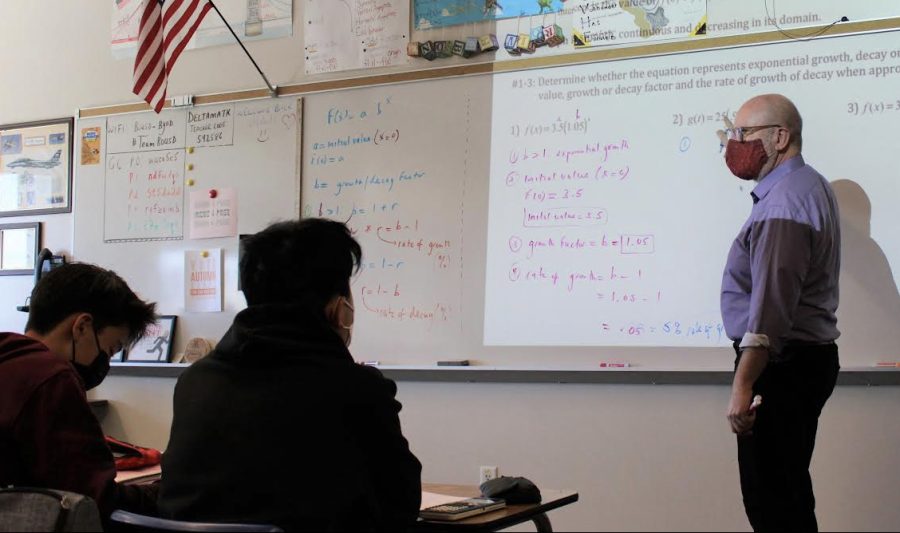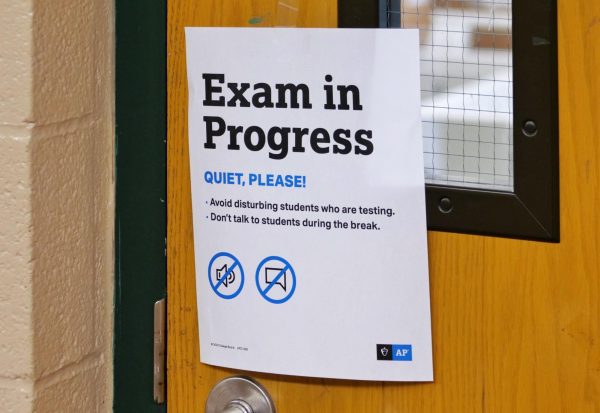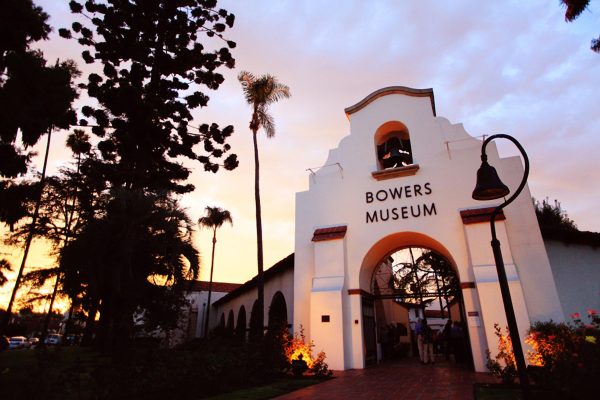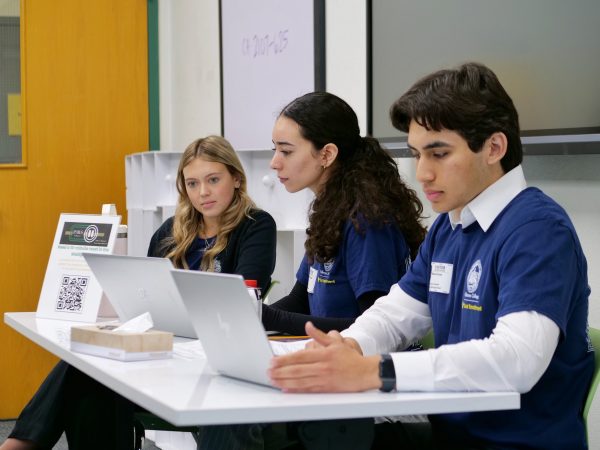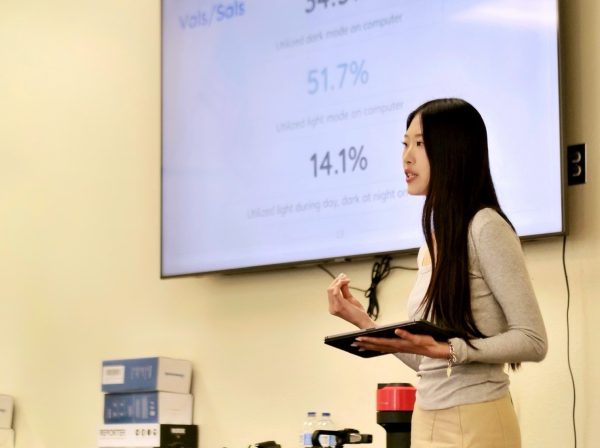WASC Committee to Visit BOHS For Six-Year Accreditation
Matthew Finnerty, math teacher, teaches a lesson on exponential growth and decay to his fourth period Algebra II/Trig. class. A Western Association of Schools and Colleges (WASC) visiting committee will enter classrooms on Feb. 28 as part of their review of BOHS’s six-year action plan.
A Western Association of Schools and Colleges (WASC) committee will visit BOHS Feb. 28 and March 1 to review the school’s six-year action plan.
An action plan is a set of goals that school staff will take every year in the next six years to “meet the needs of the school,” Sara Bottalico, WASC Coordinator and AP Biology teacher, said.
WASC is an association that provides accreditation to schools by observing student performance and “accepting objective evaluation from a team of outside peer professionals trained by the Accrediting Commission for Schools (ACS) and WASC.”
The visiting committee arrives to BOHS to consider the accuracy of the action plan and to recommend areas for improvement.
This year’s WASC visiting committee consists of: Mindy Davis, teacher, Mt. Carmel High School; Jose Araux, principal, Rubidoux High School; Andrew Hiben, assistant principal, Colony High School; Crystal Hilstein, teacher, Saugus High School; Rosemary Miller, Curriculum Program Specialist ELA 7-12, Bloomington High School; and Jesse Schuveiller, principal, Sage Creek High School.
On Feb. 28, classroom visits by the committee will occur all day from zero to sixth period. Student leadership will meet at lunch. During sixth period, there will be a leadership meeting in Room 200, followed by focus group meetings in the afternoon.
On March 1, classroom visits will continue; the WASC selected-student meeting will be held during first period in Room 240; and the representative teacher lunch will be in the library. Focus group meetings again will meet in the afternoon.
By the last day of the committee’s visit on March 2, an “exit report” will be presented during an after school meeting. The committee will “share their findings with all the staff so we know how we did and can validate what we’ve said that we were doing is true,” Bottalico said.
The last time a WASC visiting committee toured BOHS was in 2018 for a mid-cycle report. Following the COVID-19 pandemic, WASC was unable to hold their six-year cycle visit in 2021. So, this years’ visit will complete the full cycle and continue BOHS’s accreditation process.
Preparation for the WASC visiting committee began at the start of the school year. Monthly meetings were held on Wednesdays for students, staff, and parents. Bottalico has been serving as the event planner and liaison for each focus group.
Each focus group that prepared the action plan included a mix of classified and certificated staff, parents, and students from ASB, Link Crew, and AVID. They were tasked with generating a specific section of an action plan. These sections, or focus groups, are: organization, curriculum, learning and teaching, assessment and accountability, and school culture.
Mary Grigoli, chemistry teacher, and leader of the curriculum focus group, said, “We looked at student work, content goals, and learner outcomes, just to show the great things teachers were doing on campus in our action plan.”
Catherine Chiu, junior and Link Crew treasurer, was assigned to the organization focus group. “We observed and noted the improvements that could be made within the organization of the campus, classes, and school life,” Chiu said, “The group also discussed the ways to implement such statements in the critical learner’s needs.”
According to Bottalico, at the end of the report, there are “four critical learner needs” that the focus groups have collectively organized:.
- Critical Learner Need #1: Prepare students to be college and career ready upon graduation through rigorous and relevant coursework that fulfills the A-G requirements and all state standards.
- Critical Learner Need #2: Create and implement an integrated systematic approach to the social emotional learning that promotes a culture focused on the safety and well-being of students, staff, and parents.
- Critical Learner Need #3: Utilize technology as an instructional and assessment tool to improve and support student learning and 21st century skills.
- Critical Learner Need #4: Revisit mission and vision to ensure school goals are aligned with our community goal and priorities of the BOHS community.
To prepare for the WASC visit, teachers across campus are preparing lessons to demonstrate to the committee the “student collaboration and engagement,” Amanda Hefner, English teacher, said.
Room cleanliness is also a priority. Susan Luce, English teacher and WASC focus group leader, tidied her room in preparation for next week’s meetings with staff and the visiting committee. “We want to put our best foot forward so they can see what a good school we are,” Luce said.
Elsewhere on campus, maintenance teams have been replacing light bulbs, removing unused furniture from teacher classrooms, and readying the grounds.
As teachers and staff prepare for the visit, Bottalico hopes “that the visiting committee sees all the good things that are happening on [our] campus. I think that the culture [we have] is really strong and I want the WASC committee to see that,” she said.
Your donation supports the student journalists at Brea Olinda High School! The contribution will help us purchase equipment, upgrade technology, and cover our annual website hosting costs.
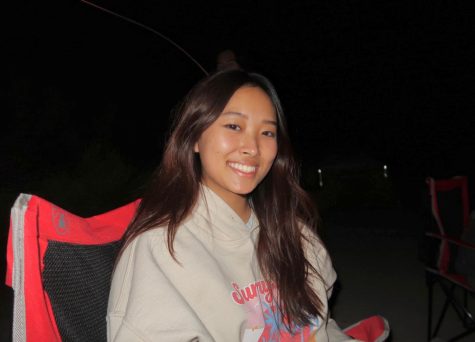
Doyon Kim, senior, is the Editor-in-Chief of the Wildcat, and this is her fourth and last year on staff. She loves binge-watching TV shows during her free...
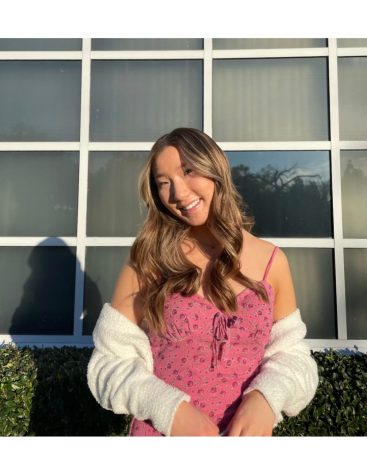
Karis Choi, junior, joined the Wildcat newspaper at the beginning of her sophomore year starting off as a photographer and staff writer and transitioning...
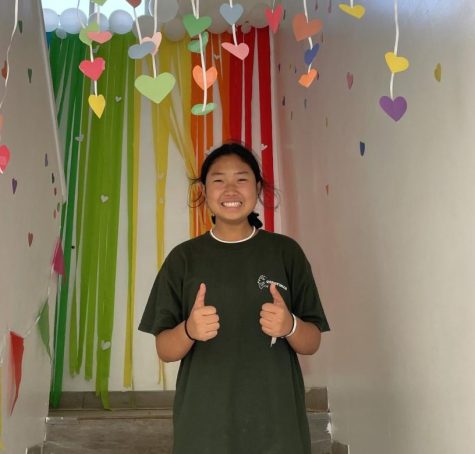
Claire Seo is a senior and this is her fourth year taking photos for the Wildcat newspaper. She is a huge movie buff and loves spending time with her friends,...



